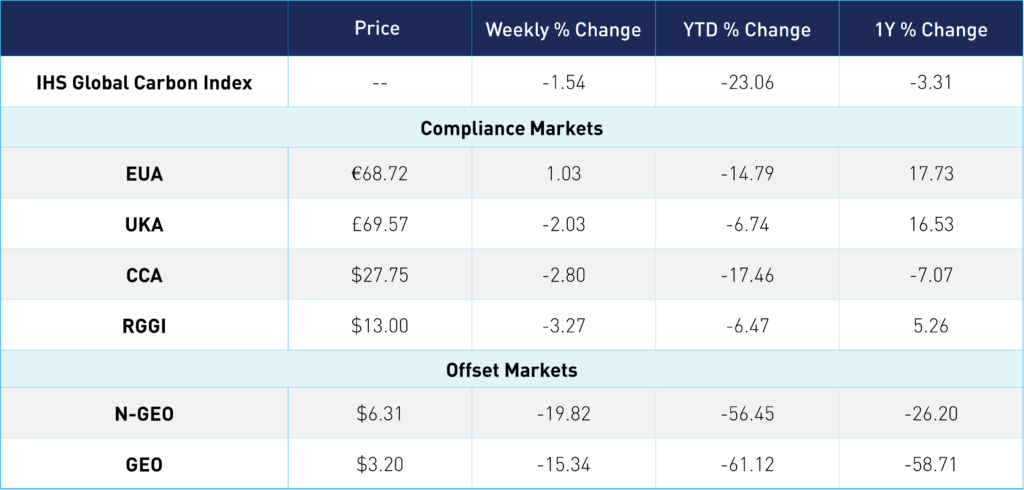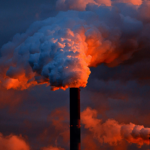
Climate Change is Everywhere – and Mostly Down to Us
3 Min. Read Time
In September, Hurricane Ian swept over Cuba, Florida, and North Carolina, killing more than 120 people and triggering power cuts, interrupting freshwater supplies, and flooding significant land areas.
The hurricane caused an estimated $60 billion in damage.
In addition to the damage caused to infrastructure, the storm forced widespread evacuations that halted businesses for many days.
Earlier this month, the “worst storm in a century” hit the island of Crete in the Mediterranean, killing at least two people and causing a year’s worth of rain to fall in just three hours.
2022 has seen some of the most extreme weather events in our documented history, and new studies attribute it to human-induced climate change.
Research by Carbon Brief shows that 71% of 500 documented extreme weather events were made more likely or more severe by climate change. According to the study, 93% of all heatwaves, 68% of droughts, and 56% of floods or heavy rain were accentuated by man-made climate pollution – greenhouse gas emissions.
The greenhouse effect drives these worsening climate impacts: increasing concentrations of greenhouse gases in the atmosphere trap heat, leading to “global warming” – the overall increase in average global temperatures.
In turn, this rising global average temperature is changing our climate, making storms stronger, and causing longer droughts and hotter heat waves.
Climate change is also melting glaciers and the polar ice caps, adding billions of tonnes of freshwater to the oceans and changing the salinity of our seas.
This desalination is leading to mass migrations of marine life. Along the coast of New York and Connecticut, the lobster industry has nearly disappeared over the last 25 years, as warmer temperatures have driven down the survival rate of young lobster.
Sudden changes in water temperature injure the tiny organisms that “make up” coral reefs and bleach them. Research shows that a 1-degree Celsius increase in global average temperatures would cause all coral reefs to use their coral by the middle of this century.
The Intergovernmental Panel on Climate Change (IPCC) stresses that we must limit global warming below 1.5°C pre-industrial levels to avoid the worst effects of climate change. Yet, IPCC predicts that if we cannot change the current growth trend in emissions, the world will see average temperatures rise between 3-4°C.
In the last year, widespread flooding has also struck Oman, Bangladesh, Sudan, Malaysia, and Pakistan, among other countries, washing away roads and homes.
Elsewhere it is often a lack of water that causes damage and suffering. Droughts led to more wildfires in California, Australia, and even the U.K. in 2022.
Large stretches of the Po River in Italy fried up over the summer, while levels on the Netherlands’ Waal and IJssel rivers fell to dangerously low levels, preventing regular river traffic and impacting the region’s economies.
China suffered its worst-ever heatwave during the months of June through August this year, while in March, Antarctica experienced temperatures more than 70 degrees Fahrenheit above seasonal norms.
India recorded its hottest month in 122 years. India!
The sheer number of events, trends, and changes caused by our changing climate should cause extreme concern. While it is relatively easy to focus on short-term conditions in one location, climate change is a global problem and can only be understood globally.
While coral bleaching in the Great Barrier Reef may not seem relevant to farmers suffering drought in California, the two symptoms are inextricably linked and trace their origin back to the immense volume of greenhouse gases pumped into the atmosphere each year.
For more than 40 years, we have understood the problem, and as time passes, we know more about its impacts and dangers. So much so that the world has started to act.
We know the culprit – ever-rising concentrations of carbon dioxide and its equivalents in the atmosphere, acting as a giant greenhouse to trap heat.
We know what the answer is, too. To wean ourselves off the industrial processes that emit greenhouse gases and fossil fuels that power our cars and to invest in and transition to clean alternatives that reduce those dangerous emissions.
We now have many innovations needed to drive a new low-carbon economy. Renewable energy, in the form of electricity and fuels, energy storage systems, and we’re developing clean ways to produce many of the materials our world is built with.
Many countries have adopted ambitious policies to drive this transition, including innovations such as carbon markets, that deliver a robust financial incentive to move away from carbon-intensive production and consumption.
The extreme weather events we learn about almost daily are simply the most vivid and urgent signal we need to complete this transition. Beneath that – in the warming seas, the melting glaciers, and declining rivers – is the steady rhythm of climate change that we must stop. What's more, this is why global compliance carbon prices must rise to have an impact on climate mitigation.
Carbon Market Roundup
Compliance Markets
EUAs dipped during the week, hitting ~€66 on Thursday but jumped back up to €68.72 Friday. UKAs also declined slightly throughout the week, however, came back Friday at £69.57 though still down -2.03% week-over-week. Both the CCA and RGGI markets saw prices fall slightly, down -2.80% and -3.27%, respectively. CCAs closed at $27.75, while RGGI was $13.
Offsets Markets
Nature-based offsets, N-GEO were down -19.82%, at $6.31. Meanwhile, GEOs were off -15.34%, ending at $3.20.
Carbon Futures Prices











